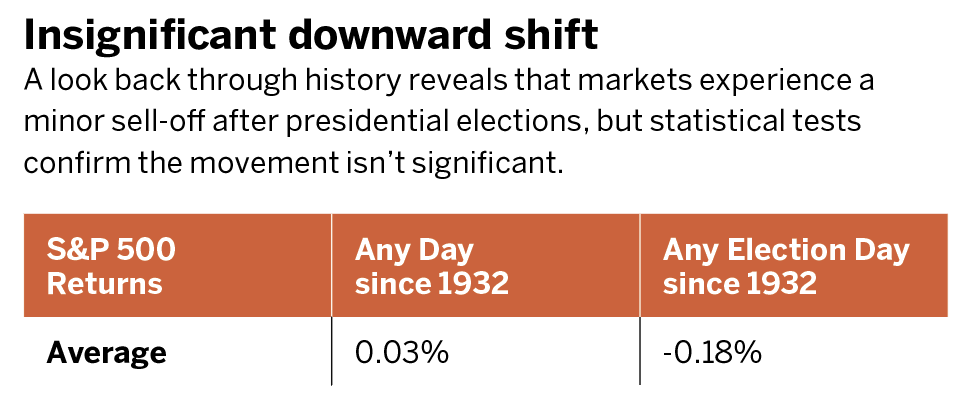Just Another Trading Day
Markets don’t move much when America goes to the polls
What happens to the markets during a presidential election? Not much. History indicates traders need not fear a large move to the downside or the upside. Take a look at all of the presidential races since 1932, and see how the market reacted after election day.
The market tends to sell off just a hair on election days, as opposed to any randomly chosen market day. However, a statistical test of those results does not indicate a significant difference between the returns on election day versus returns on any given day.
That’s because the average election day returns of -0.18% are within the realm of possibility based on the standard deviation—or typical difference from the mean—of daily S&P 500 returns since 1932. If average election day returns were either less than -0.44% or greater than 0.50% per day, then one could argue that election day returns differ from any random day’s returns.
Those upper and lower bounds of -0.44% and 0.50% are calculated assuming that stock returns are normally distributed. Now, returns are not perfectly normally distributed, but for the sake of this example and simplicity that assumption is OK.
Some takeaways from this information:
There’s no statistical difference between the return on any given day in the S&P 500 and an election day in the S&P 500.
Even though the average return on election day is less than on any random day, statistically, one cannot conclude with any certainty that it’s because of anything other than chance.
With that in mind, traders have no reason not to be invested in the market through election day. Treat it as any other day in the market.

Anton Kulikov is a trader, data scientist and research analyst at tastytrade.
@antonkulikov97




















